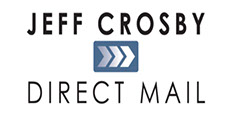The Services

Delivering Powerful Direct Mail
I view a direct mail campaign as a multi-part conversation with the voters. Though each piece must stand on its own, all the pieces should reinforce each other.
Why this approach? Well, it’s because I can never predict what exactly will work and, more importantly, when it will work.
Will one mail piece compel them to support my client? Will it be a pair of them? Will the combined impact of all of the mail push voters to our side?
I have examples that provide a yes answer to each of these questions, but I don't find out until the campaign is over. So I build a plan for the long game.
Creatively, I have five imperatives:
• Its physical size makes it stand out among standard envelopes
• The design should invite otherwise disinterested readers and avoid multi-layered images or dense, gray columns of text
• The type should be big enough so older voters don’t need their glasses to read it
• The main headlines work in tandem with the images
• Maintain credibility by not going over the top
To create a mail plan, l take into account the following factors:
• Target voters by balancing the needs of frequency and reach
• A realistic budget ensures there’s no time wasted
• Plan for the start of Early Voting
• Delivery speed can vary from city to city
But there is one overriding mandate: All deadlines must be met. That’s not as easy as it may sound. Putting out a mail piece is a series of sequential steps; one delay can delay the whole thing.
I am ruthless about making these deadlines. I’m also experienced enough to know that things can and will go wrong and how to quickly solve the problem. It’s also why I have long-standing working relationships with my vendors. They know how I operate and how to manage it.

Developing The Winning Message And Strategy
What should you tell the voters? How do you make sure they hear it? And when should you deliver it?
Those are the essential questions I focus on when I’m developing a campaign message and strategy.
First, I’ll create a data-driven message that taps into basic emotions: hope and fear or compassion and greed. It has a dramatic structure, with a clear distinction between the good guy (you) and bad guy (your opponent).
Then I determine the most cost-effective media – TV, direct mail, radio, Internet, social media, door-to-door, and phone banks -- to deliver it. Each one has inherent strengths and weaknesses.
Finally, I create a schedule for all these moving parts and make them work in concert with the other elements of the campaign.
And when it’s all put together, I make sure we stay on message, get the biggest bang for our media buck, and hit all of our deadlines.
In politics, winning is rarely an accident.
Copyright 2014 Jeff Crosby Direct Mail
Site Design by Bear Creek Media
